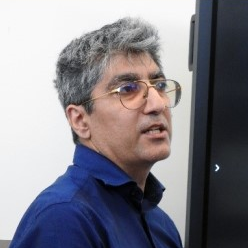Geological Materials and Cultural Heritage through the Millennia
A special issue of Quaternary (ISSN 2571-550X).
Deadline for manuscript submissions: closed (31 December 2023) | Viewed by 4557

Special Issue Editor
Interests: Raman spectroscopy; geochemistry; source-to-sink sedimentary dynamics; environmental mineralogy; mineral pigments; CLIL (Content and Language Integrated Learning) methodology
Special Issues, Collections and Topics in MDPI journals
Special Issue Information
Dear Colleagues,
An important part of what gives an artifact or a building character and a sense of belonging is the history they represent. One way of acknowledging this history is by understanding the materials' values, their sources, their diffusion through trade and use, and the processes behind their manufacturing or building. These peculiar features may be an example of a particular style of architecture, represent a significant era, represent superb craftsmanship and exquisite artistic features that were achieved during a significant period, or also represent a milestone in a city’s history. These historical and cultural heritages are worth preserving for an endless number of reasons. Old artifacts or buildings are witnesses to a society’s aesthetic and cultural history, helping to give people a sense of place and connection to the past.
Historical and cultural heritage is often created with unique, valuable geomaterials. These were used over space and time as implements, ornaments, pigments, building materials, and raw materials for metals, ceramics, and other processed products. They may have detailing and features that cannot be found anymore.
Accordingly, this Special Issue welcomes research and review papers on the subject of the characterization of geomaterials and their use in art and architecture through the millennia. In this context, particular attention will be given to contributions on, but not restricted to, the following topics:
- Archaeomineralogy
- Geoarchaeology
- Archaeometallurgy
- Petroarchaeology
- Archaeometry
- Gemology and archaeogemology
- Ancient literary sources on gems
- Mineral pigments
- Gems and gemstones
- Ancient mortars
- Obsidian, glass, and vitreous materials
- Pottery and ceramics
- Stones in architecture
- Provenance studies
- Spectrometric methods for geomaterials
- Mineralogical and geochemical methods for geomaterials
- Dating methods
Dr. Sebastiano Ettore Spoto
Guest Editor
Manuscript Submission Information
Manuscripts should be submitted online at www.mdpi.com by registering and logging in to this website. Once you are registered, click here to go to the submission form. Manuscripts can be submitted until the deadline. All submissions that pass pre-check are peer-reviewed. Accepted papers will be published continuously in the journal (as soon as accepted) and will be listed together on the special issue website. Research articles, review articles as well as short communications are invited. For planned papers, a title and short abstract (about 100 words) can be sent to the Editorial Office for announcement on this website.
Submitted manuscripts should not have been published previously, nor be under consideration for publication elsewhere (except conference proceedings papers). All manuscripts are thoroughly refereed through a single-blind peer-review process. A guide for authors and other relevant information for submission of manuscripts is available on the Instructions for Authors page. Quaternary is an international peer-reviewed open access quarterly journal published by MDPI.
Please visit the Instructions for Authors page before submitting a manuscript. The Article Processing Charge (APC) for publication in this open access journal is 1600 CHF (Swiss Francs). Submitted papers should be well formatted and use good English. Authors may use MDPI's English editing service prior to publication or during author revisions.





